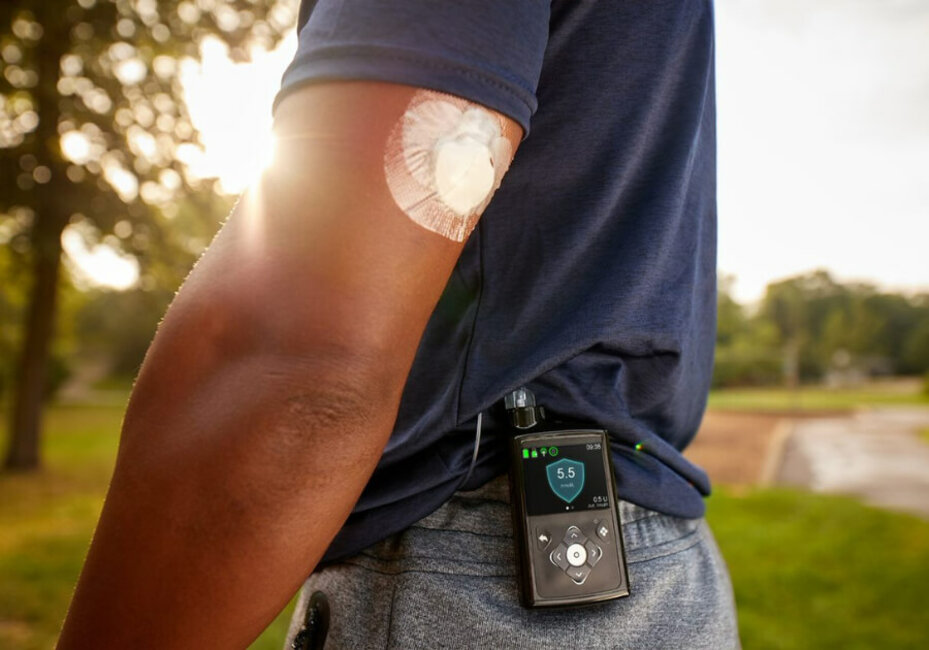Exciting landmark news for people living with diabetes - greater access to diabetes technology (nice guidelines)
During the spring, landmark news for diabetes technology was released. Impactful new National Institute for Health and Care Excellence (NICE) Guidelines for diabetes management introduced significant recommendations for improving access to essential technology, that not only supports improved care and management, but also states that people living with type 1 diabetes will be offered Continuous Glucose Monitoring (CGM).
These guidelines make recommendations on best practises for ensuring clear diagnosis, management, and service provision across the National Health Service (NHS). They also aim to advise healthcare professionals, commissioners, care providers, people with diabetes as well as their families and/or carers.
This represents an incredible progression for diabetes management, and one that Medtronic are very proud to be a part of.
The advantages of Continuous Glucose Monitoring
Many people living with diabetes use continuous glucose monitoring, to track glucose levels every few minutes 24/7 through a tiny sensor inserted under the skin. This small sensor measures your interstitial glucose levels, which is the glucose found in the fluid under your skin.
What are the benefits?
A blood glucose meter only provides a brief “snapshot” of your glucose level at a single moment in time. A CGM system gives you a greater view of your glucose trends. CGM can provide valuable information1 at crucial points during the day, including before and during exercise, prior to driving, before test/exam-taking, and in the middle of the night (Discover More)
How can I utilise CGM information?
Watch this animation to learn about Time In Range and how CGM information can provide a more complete picture of your glucose levels. You can also learn about how CGM can help your diabetes management when integrated with Insulin Pump Therapy’ (Learn More)
Key Highlights:
All three new updated NICE guidelines:
- NICE Guideline [NG18], Diabetes (type 1 and type 2) in Children and Young People: Diagnosis and Management.
- NICE guideline [NG17], Type 1 Diabetes in Adults: Diagnosis and Management
- NICE guideline [NG28], Type 2 Diabetes in Adults: Management
Include recommendations on the use of CGM technology. Noting the NHS should “offer children and young people with T1 real-time continuous glucose monitoring (rtCGM) alongside education to support children and young people and their families and carers to use it as appropriate2” (See full guidance).
With a similar endorsement for adults with T1 diabetes to be offered “a choice of real-time continuous glucose monitoring (rtCGM) or intermittently scanned continuous glucose monitoring (isCGM), based on their individual preferences, needs, characteristics, and the functionality of the devices available3” (See full guidance).
For adults with type 2 diabetes on multiple daily insulin injections to be offered “intermittently scanned continuous glucose monitoring4” within a set eligibility criterion (See full guidance).
The new critical recommendations from NICE, will shape the way all people with diabetes receive innovative, evidence-based care and technology from the NHS to help support them achieve better control and management of their diabetes and an improved quality of life.
Medtronic Diabetes Therapies:
Advanced diabetes technologies like sensor augmented pumps and hybrid closed loop systems with automatic insulin delivery & predictive therapy algorithms can help with:
- Easing the burden by automatically adjusting the amount of insulin delivered based on CGM data5*
- Reducing fear of hypoglycaemia 6,7
- Keeping your glucose values at healthy Time In Range (TIR) and HbA1c targets 5,6,8 -11
* Some user interactions are required
For information regarding specific individual diabetes care needs, please contact your diabetes health care professional.
References:
Source : https://www.medtronicdiabetes.com/treatments/continuous-glucose-monitoring
Source : https://www.nice.org.uk/guidance/ng18/chapter/Recommendations#type-1-diabetes
Source : https://www.nice.org.uk/guidance/ng17/chapter/Recommendations#blood-glucose-management
Bekiari E. et al. BMJ. 2018;361:k1310
Nørgaard K. et al. Diabetes Technol Ther. 2013;15(4):273‐280
Bosi E et al. Lancet Diabetes Endocrinol. 2019;7(6):462‐472
Beato-Víbora PI. et al. Diabetes Technol Ther. 2018;20(11):738‐743
Karageorgiou V. et al. Metabolism. 2019;90:20‐30
Weisman A. et al. Lancet Diabetes Endocrinol. 2017;5(7):501‐512
Duffus SH. et al. Diabetes Obes Metab. 2020;22(4):688‐693
UK-GDB-2200034
